Picture a kitchen that is as pleasing to the senses as it is to the planet. A space where each cabinet, countertop, and surface reflects a thoughtful commitment to sustainability. In this eco-conscious haven, style and environmental responsibility intertwine, allowing your design aspirations to align perfectly with your values. Are you prepared to bring your dream sustainable kitchen to life? Dive into the realm of eco-friendly materials that will reignite your passion for cooking. From the serene elegance of bamboo to the deep-rooted character of reclaimed wood, these mindful selections transform the concept of a kitchen with true essence.
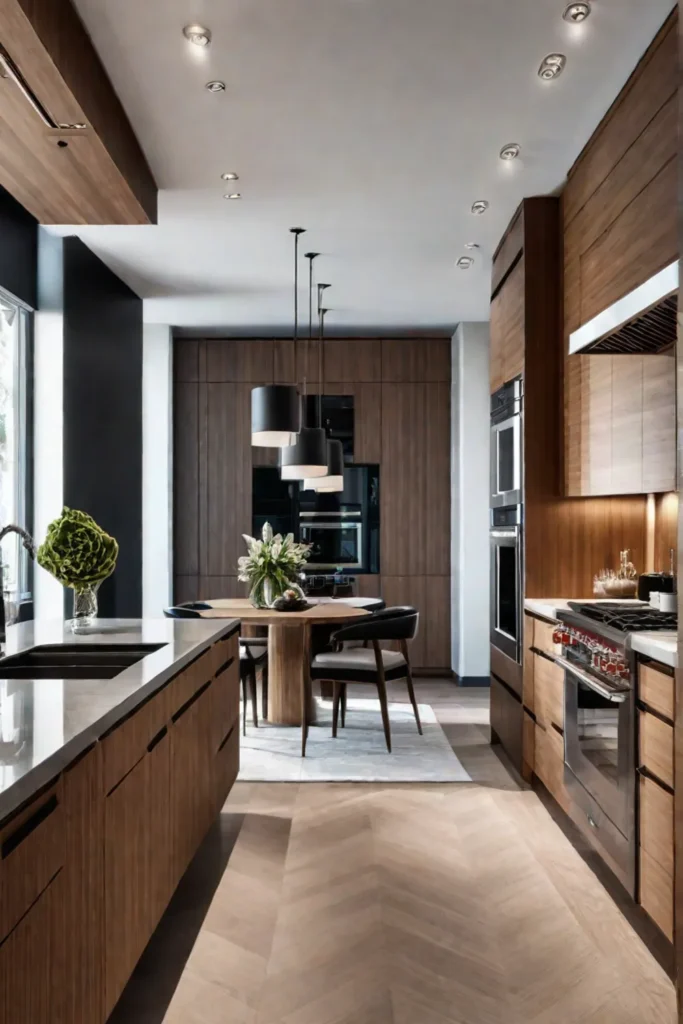
So come along on this journey – a journey where every decision is an opportunity to create a space that is as good for the planet as it is beautiful. Your preference for the finer things in life will soon receive an ethical upgrade.
Bamboo: The sustainable superstar
Have you ever imagined sleek, modern cabinets that effortlessly combine form and function while being kind to the planet? Then bamboo is perfect for you – nature’s renewable gift that is quickly becoming a star in kitchen design.
The Growth and Harvesting of Bamboo
Let’s start with the mind-blowing fact that some species of bamboo can shoot an incredible 90cm in height in just 24 hours! This rapid growth rate makes bamboo one of the most sustainable materials on earth. Unlike slow-growing trees that can take decades to mature, bamboo recovers quickly after harvest and can be easily replanted and cultivated.
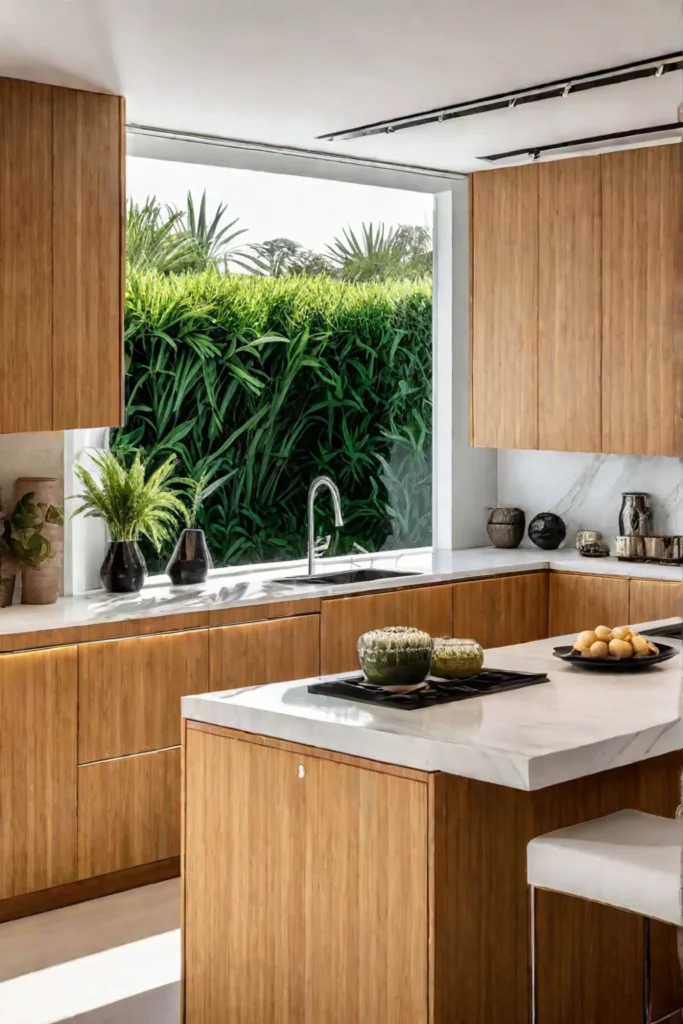
Benefits of Bamboo Cabinets
Beyond its eco-friendly roots, bamboo brings stylish versatility to kitchen spaces. Its natural, light hue provides the perfect, clean slate tone for adding pops of color through backsplashes, appliances and decor accents. The vertical grain option provides a simple, minimalist look, while bamboo veneer offers an affordable alternative with this sought-after look.
But bamboo doesn’t just look pretty – it’s a real workhorse in the kitchen. Because these cabinets are naturally antimicrobial and moisture-resistant, they can easily handle busy cooking areas and ward off mold, mildew, and dreaded water damage. For the sustainability-minded renovator, bamboo ticks all the boxes.
When purchasing your bamboo cabinets, look for Forest Stewardship Council (FSC) certification. This ensures that your materials have been responsibly harvested from well-managed bamboo forests. With a little conscious shopping, you can feel good about this ultra-renewable choice.
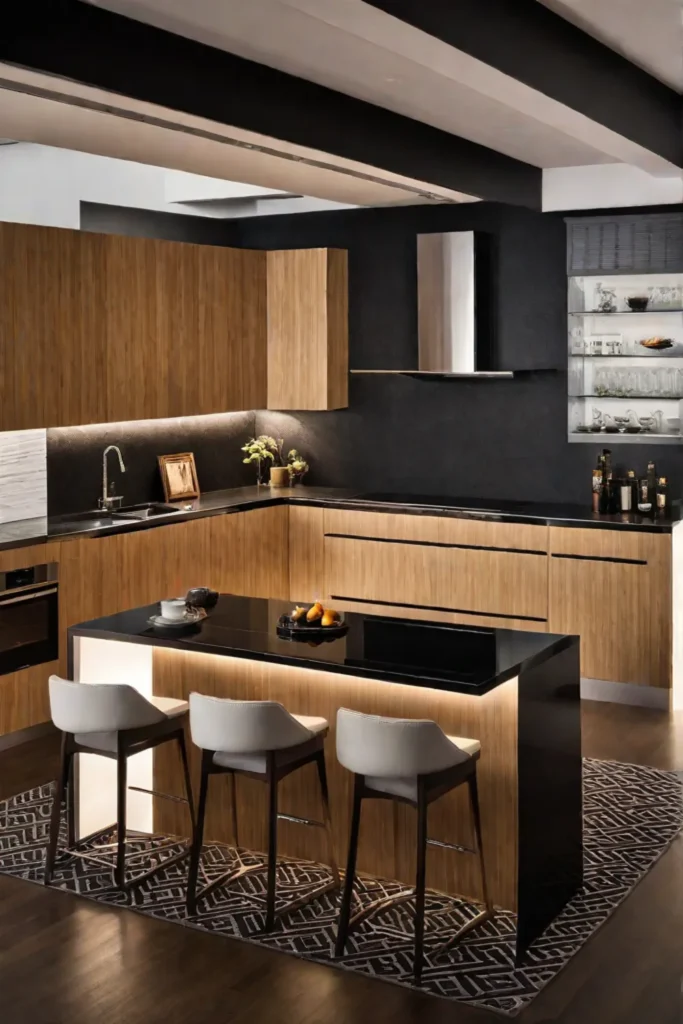
Ready to enjoy the relaxed luxury of bamboo in your kitchen oasis? Bringing the outdoors inside through natural materials is a surefire way to develop a sense of calm during your culinary adventures.
Bamboo’s versatility makes it the perfect starting point for the next sustainable star – reclaimed wood, a material full of rustic character and stories to tell.
Reclaimed wood: Bring history into your kitchen
What if your kitchen cabinets could tell stories from the past? With reclaimed wood, you get exactly that. These timeless beauties are made from materials salvaged from old barns, factories, and other historic buildings, breathing new life into centuries-old wood.
Sources of Reclaimed Wood
The possibilities are endless when it comes to reclaimed wood origin stories. Your cabinets could be built from the sturdy beams of a 19th-century farmhouse or the weathered boards of an early 20th-century industrial warehouse. Each piece carries its own unique character and charm, shaped by the traces of its previous life.
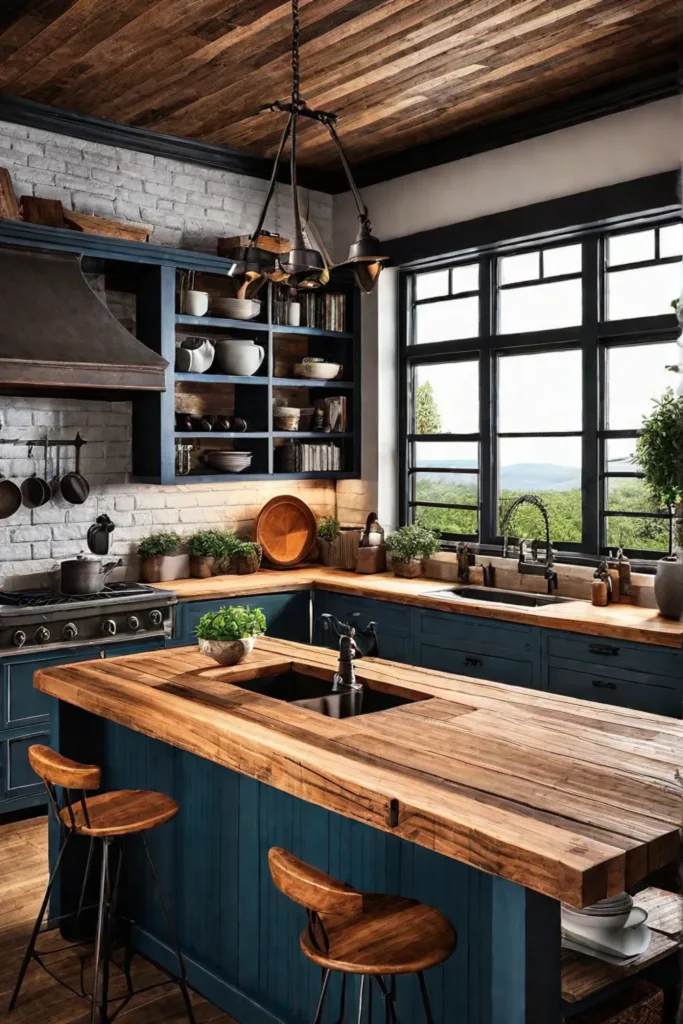
The unique beauty of reclaimed wood cabinets
In addition to their eco-friendly appeal, reclaimed wood cabinets offer a warmth and rustic charm that is simply unmatched. The natural knots, grains and structures in a used look create a unique eye-catcher in your kitchen. Imagine the conversations these cabinets could spark as guests admire the intricate details and wonder about their rich history.
Practical tips for old wood
To ensure your reclaimed wood cabinets stand the test of time, look for reputable suppliers who properly treat and seal the wood to ensure durability and safety. Consider using reclaimed wood for a stunning island or open shelving unit, complemented by other sustainable materials such as bamboo or recycled glass countertops. With a little creativity, you can design a kitchen that is both environmentally conscious and absolutely fascinating.
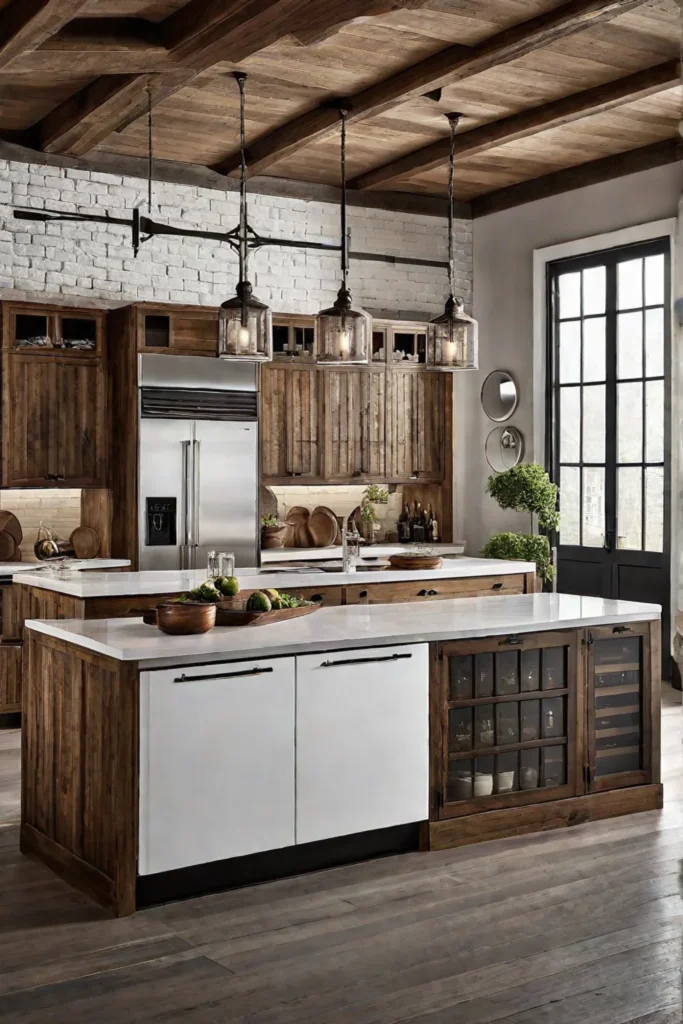
By choosing reclaimed wood, you not only add character to your space, but you also help reduce the demand for freshly harvested wood. Enjoy the beauty of the past and let your kitchen tell a story worth sharing. Next, we explore the wonders of FSC-certified wood: responsible forestry for a healthier planet.
FSC-certified wood: responsible forestry for a healthier planet
Did you know that up to 20% of global greenhouse gas emissions come from deforestation and forest degradation? This is a frightening number, but we can help mitigate it through conscious consumer choices. FSC-certified wood is used here – a sustainable material with which you can build the kitchen of your eco-friendly dreams.
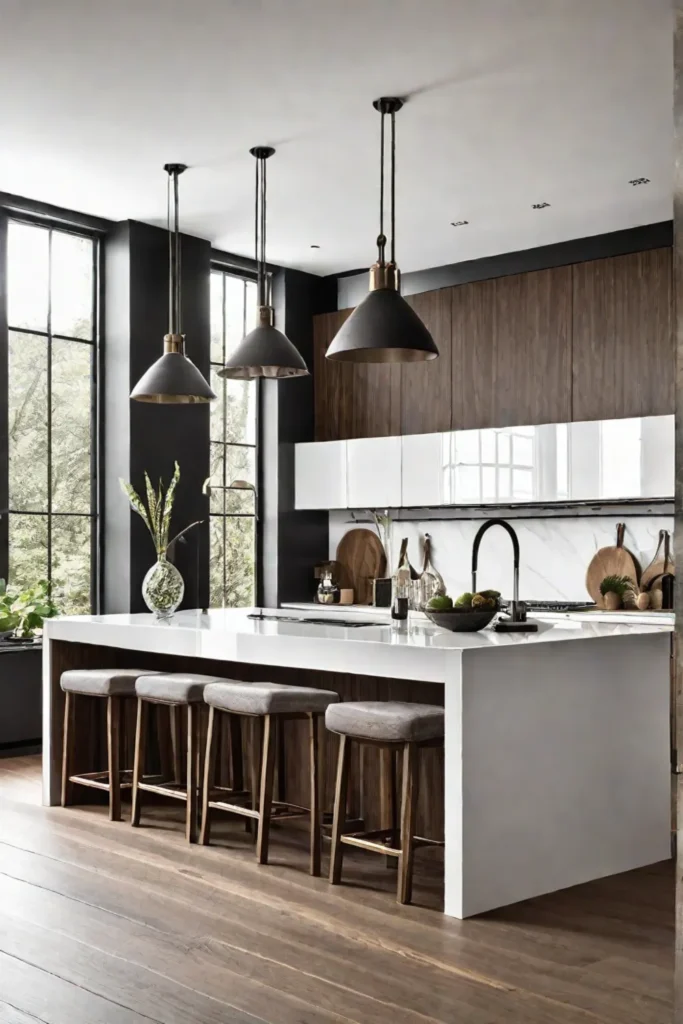
Understanding FSC certification
The Forest Stewardship Council is a nonprofit organization dedicated to protecting the world’s forests. Their green seal of quality certifies that wood products come from responsibly managed forests and meet strict environmental and social standards. Think selective harvesting, respect for indigenous rights and protecting biodiversity – the whole package.
Benefits of choosing FSC certified wooden cabinets
Choosing FSC-certified wood not only looks good (and trust me, these cabinets are stunning), but is also an investment in the future of our planet. They actively support forestry practices that prioritize long-term sustainability over quick profits. Additionally, it is a badge of honor that shows the world that you are committed to living an ethical and environmentally conscious life.
Recognize the FSC label
Luckily, identifying FSC-certified products is easy – just look for the iconic tree logo. Don’t be afraid to inform your carpenter about his procurement and ask him to see these very important certification documents. With a little due diligence, you can be sure you’re getting the right deal.
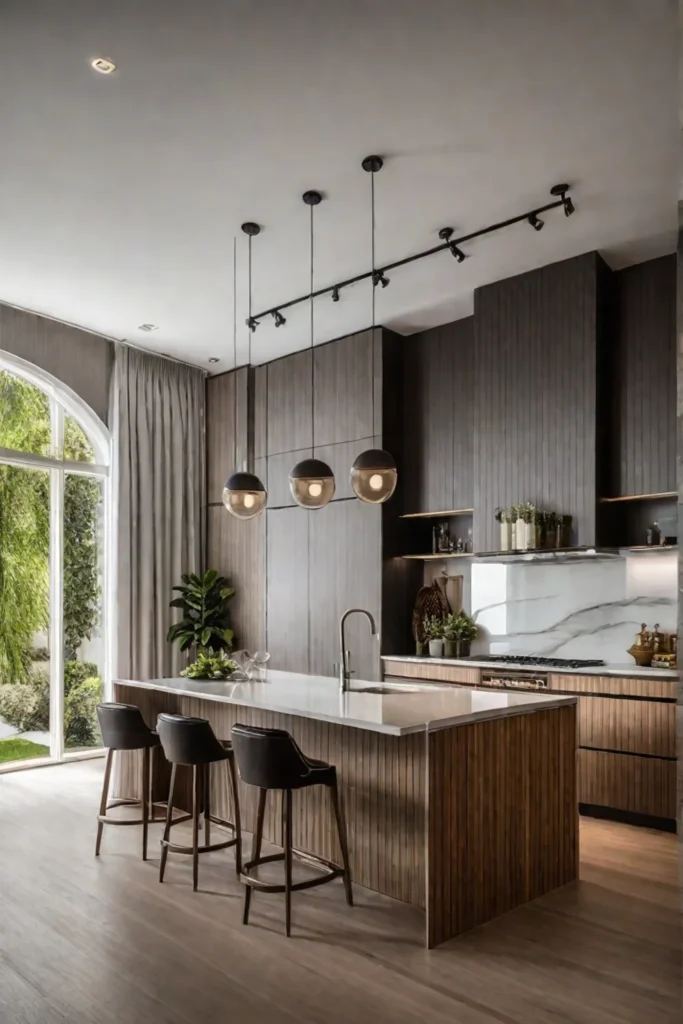
Admittedly, FSC-certified cabinets may cost a little more upfront, but isn’t it worth the investment for a healthier planet? With options like these, sustainable living has never looked so incredibly chic.
Take a deep breath, eco-warriors – we’re just getting started on building your dream green kitchen. Next up: low-VOC paints and varnishes that keep your air as fresh as your design vision.
Low-VOC paints and varnishes: Breathe a sigh of relief in your eco-friendly kitchen
Did you know that the color of your kitchen cabinets could be polluting the air you breathe? Volatile organic compounds (VOCs) are chemicals found in many common paints and varnishes that can cause respiratory illnesses, headaches and other health problems. But don’t worry, there’s an eco-friendly solution to make it easier for you to breathe easy in your sustainable kitchen!
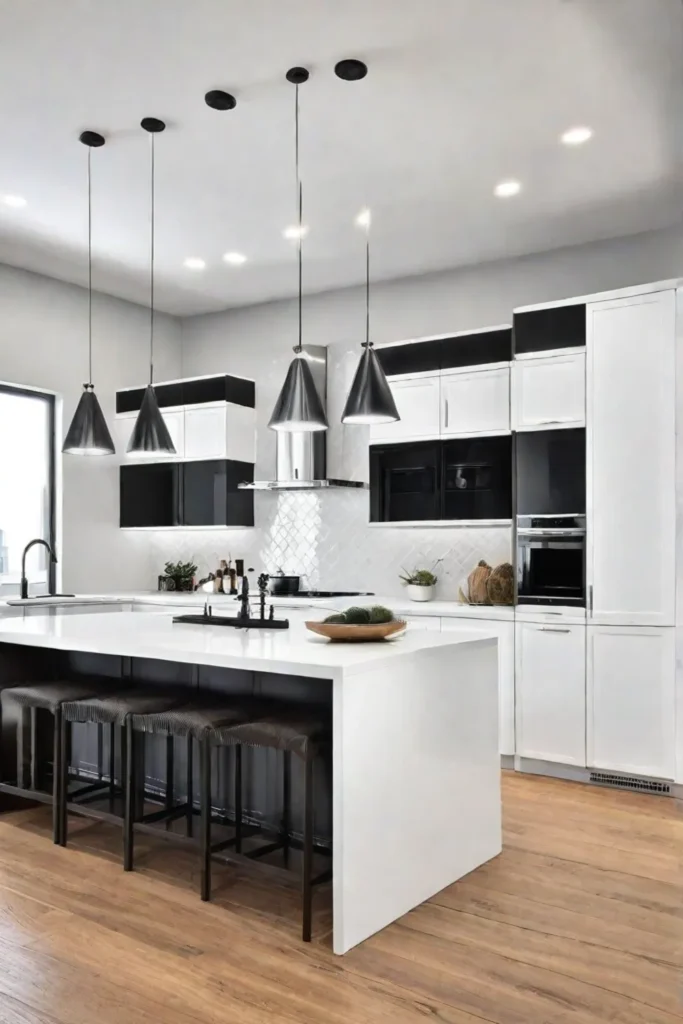
The health risks of VOCs
VOCs are no joke – these pesky compounds can wreak havoc on the quality of your indoor air. As the paint dries and cures, VOCs are released into the air you breathe. Over time, this exposure can lead to allergic reactions, asthma attacks, and even long-term lung damage. Not exactly what you want in the heart of your home, is it?
Switching to low VOC paints and varnishes
The good news is that more and more companies are offering low-VOC or completely zero-VOC paints, stains and varnishes. By choosing water-based alternatives over their oil-based counterparts, you can dramatically reduce your exposure to these harmful chemicals. Plant-based paints are also becoming increasingly popular as an environmentally friendly alternative, providing a fresh, modern look without toxic fumes.
When choosing materials for your kitchen cabinets, be sure to ask your carpenter about the finishing processes and VOC content. Many well-known companies now value products with low VOC content in order to create a healthier indoor climate for their customers.
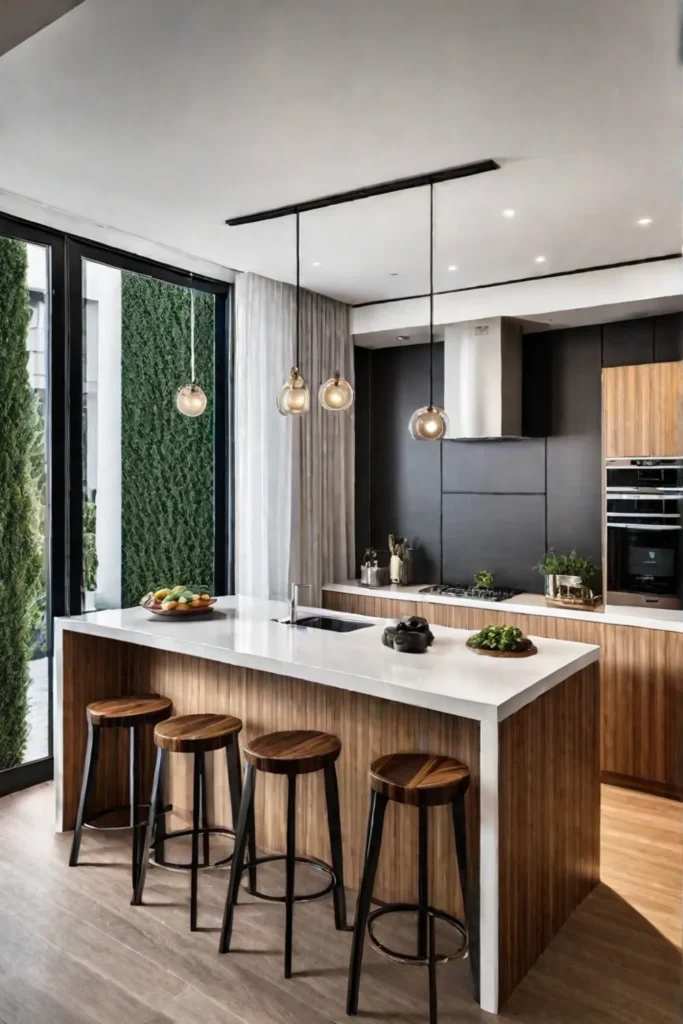
Remember, creating a sustainable kitchen isn’t just about the materials – it’s also about protecting your health and the environment for years to come. So take a deep breath and be happy about your environmentally conscious decisions!
With a few simple swaps, you can enjoy a beautiful, vibrant kitchen without compromising your well-being or that of our planet. Speaking of sustainable materials, let’s delve into the world of recycled resources for your next eco-friendly upgrade!
Recycled materials: Breathing new life into old resources
What if I told you that these sleek new kitchen cabinets could be made from recycled materials? It’s true – innovative designers transform waste into stylish and sustainable storage solutions. By choosing recycled materials for your cabinets, you’re giving new life to old resources while reducing the amount of waste in the landfill. Let me show you how recycled materials are revolutionizing kitchen design.
Innovative recycled materials in furniture construction
From recycled plastic to reused metal, the choice of recycled cabinet materials is expanding rapidly. Plastic bottles and containers can be melted down and remolded into durable cabinet doors in virtually any color imaginable. For a more industrial vibe, recycled aluminum and steel offer a modern, minimalist look. Don’t forget about composite materials – sturdy cabinets can be made from compressed wood fibers and other recycled ingredients.
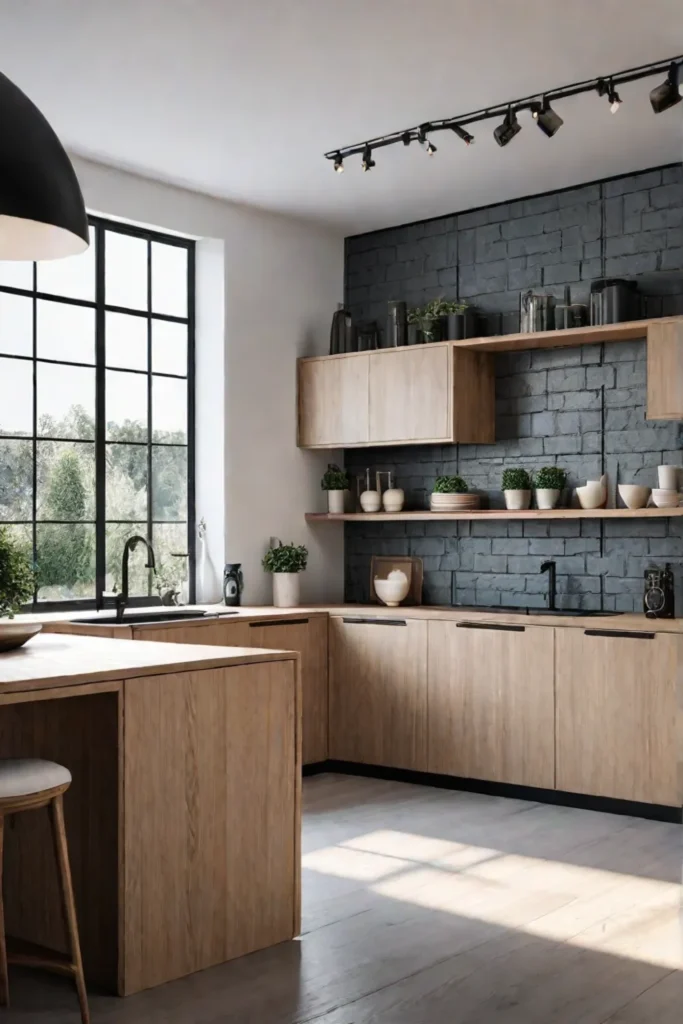
The benefits of choosing recycled content
Aside from the obvious environmental benefits that come from diverting waste from landfills, recycled cabinets often cost less than their virgin material counterparts. Many also require less maintenance and are extremely durable. But the real victory? You can feel good about your purchase while getting a trendy, sustainable kitchen update. Recycled cabinets allow you to reduce your environmental impact without compromising on style.
So next time you’re planning a kitchen renovation, explore the world of recycled cabinet materials. With a little research, you’re sure to find innovative options that perfectly fit your design vision. Just think of all the waste you keep out of the landfill!
Diploma
As you can see, designing an eco-conscious kitchen is about more than just checking a box – it’s an opportunity to infuse your space with meaning, character and a deep appreciation for nature’s gifts. When you choose sustainable materials such as bamboo, reclaimed wood, FSC-certified options, low-VOC finishes and recycled materials, you make a strong statement about your values.
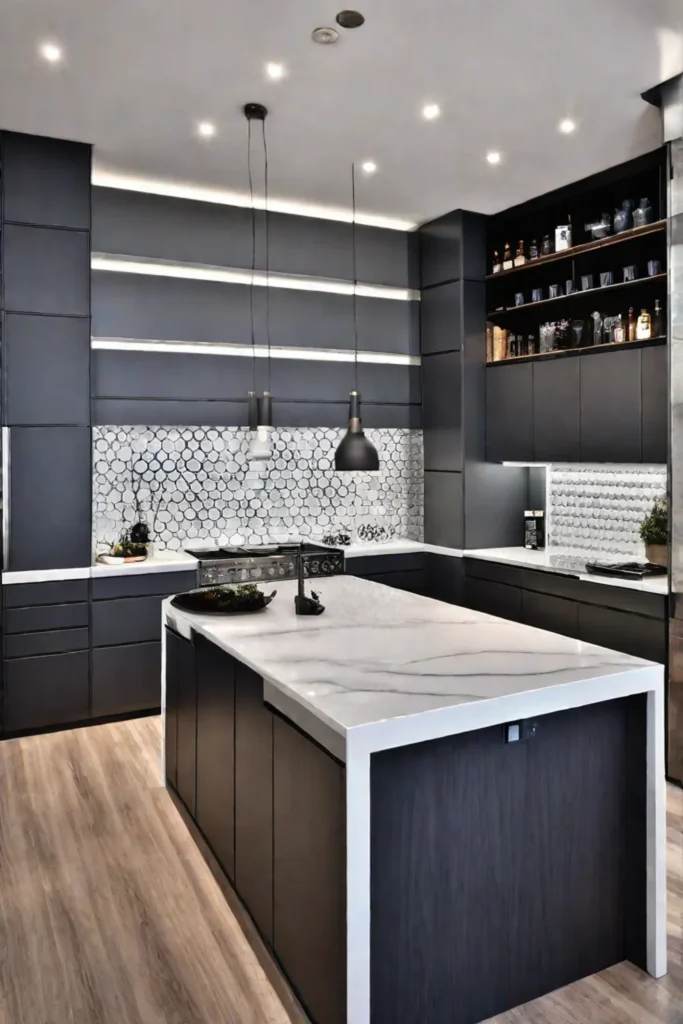
When it comes to designing your dream kitchen or bathroom, choosing the right cabinet materials is essential. Not only do you want your cabinets to look beautiful and complement your overall design aesthetic, but you also want to ensure that they are environmentally friendly and sustainable. Luckily, there are plenty of eco-friendly cabinet materials available that can help you create a stylish and sustainable space. In this article, we’ll explore 5 eco-friendly cabinet materials that you’ll love.
Bamboo
Bamboo is a popular choice for eco-friendly cabinet materials due to its sustainability and durability. Bamboo is a fast-growing grass that can be harvested in just a few years, making it a renewable resource. Additionally, bamboo is incredibly strong and durable, making it an excellent choice for kitchen cabinets that will withstand daily wear and tear. Bamboo cabinets come in a variety of styles and finishes, making them a versatile option for any design aesthetic.
Benefits and Practical Tips:
- Eco-friendly and sustainable.
- Strong and durable.
- Versatile in style and finish options.
- Easy to maintain and clean.
HTML Table:
| Pros | Cons |
| ————- |:————-:|
| Sustainable | Limited color options |
| Durable | Can be expensive |
| Versatile in style | Requires proper maintenance |
FSC-Certified Wood
If you prefer the look of traditional wood cabinets, consider opting for FSC-certified wood. The Forest Stewardship Council (FSC) certifies wood that has been harvested sustainably and responsibly, ensuring that the forests are managed in an environmentally friendly way. FSC-certified wood cabinets come in a variety of wood species, finishes, and styles, allowing you to create a custom look for your space while also supporting sustainable forestry practices.
Benefits and Practical Tips:
- Environmentally friendly and sustainable.
- Customizable in wood species, finishes, and styles.
- Supports sustainable forestry practices.
- Adds a warm and natural aesthetic to your space.
Recycled Wood
Recycled wood cabinets are another eco-friendly option for your space. Made from reclaimed or salvaged wood, recycled wood cabinets give new life to old materials and reduce the demand for new resources. Recycled wood cabinets can add a unique and rustic charm to your space, with each piece telling its own story through its unique grain patterns and imperfections.
Benefits and Practical Tips:
- Environmentally friendly and reduces the demand for new resources.
- Adds a unique and rustic charm to your space.
- Each piece is unique with its own story.
- Can be more affordable than new wood cabinets.
MDF (Medium-Density Fiberboard) with Low-VOC Finishes
MDF is an engineered wood product made from recycled wood fibers and resins. While traditional MDF can contain formaldehyde and other harmful chemicals, opting for MDF with low-VOC (volatile organic compound) finishes can make this material a more eco-friendly option. Low-VOC finishes emit fewer harmful chemicals into the air, making them a healthier choice for your indoor air quality.
Benefits and Practical Tips:
- Made from recycled wood fibers.
- Low-VOC finishes for improved indoor air quality.
- Affordable and readily available.
- Versatile and easy to paint or finish.
Stainless Steel
Although not a traditional choice for cabinets, stainless steel is a highly durable and sustainable material for kitchen and bathroom cabinets. Stainless steel is 100% recyclable, making it a great choice for eco-conscious homeowners. Stainless steel cabinets are resistant to humidity and moisture, making them ideal for kitchens and bathrooms where water exposure is common. Additionally, stainless steel cabinets have a sleek and modern aesthetic that can elevate any space.
Benefits and Practical Tips:
- Highly durable and resistant to moisture.
- 100% recyclable.
- Modern and sleek aesthetic.
- Easy to clean and maintain.
there are plenty of eco-friendly cabinet materials available that can help you create a stylish and sustainable space. Whether you prefer the natural warmth of wood, the modern look of stainless steel, or the unique character of recycled wood, there are options to suit every style and budget. When choosing eco-friendly cabinet materials, consider factors such as sustainability, durability, and indoor air quality to ensure that your cabinets are both beautiful and environmentally friendly. Elevate your space with eco-friendly cabinet materials that you’ll love!
